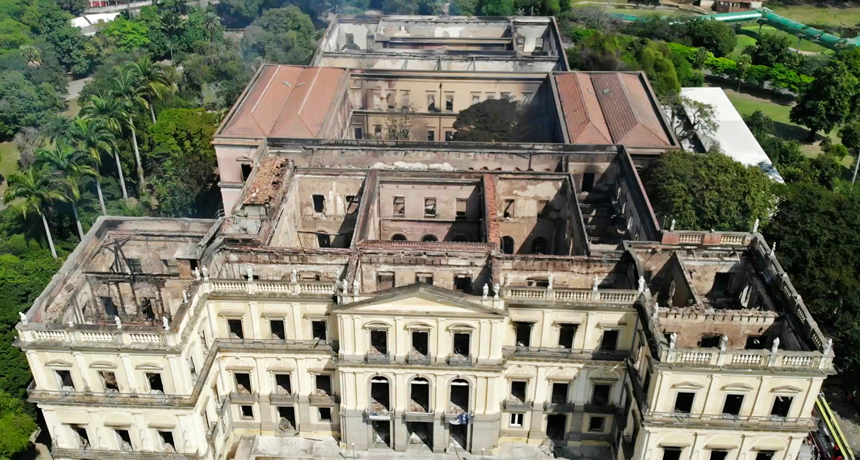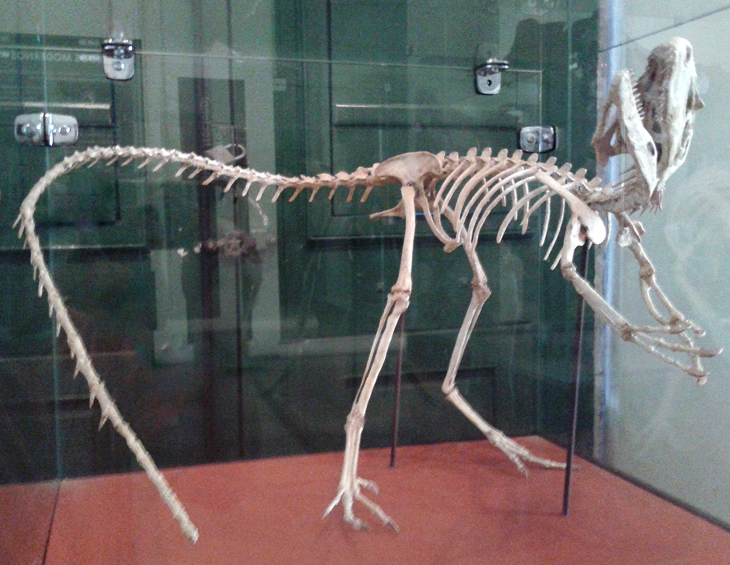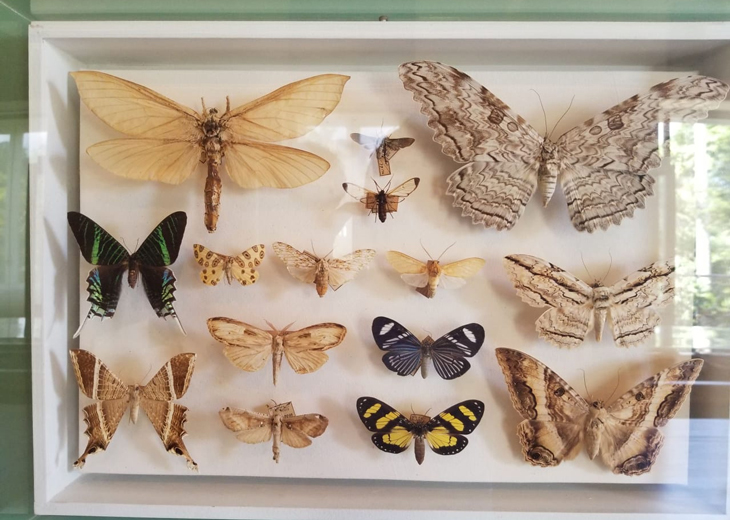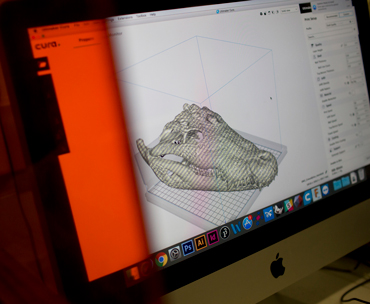Before it burned, Brazil’s National Museum gave much to science
Museum collections provide valuable datasets, and this one is no exception

GUTTED A fire on September 2, 2018, raged through the main building of Brazil’s National Museum in Rio de Janeiro.
Mario Lobao/Associated Press
- More than 2 years ago
A natural history museum isn’t just a place to take visiting relatives or for entertaining kids on the weekends. These museums’ collections also play a vital, but under-celebrated, role in scientific research.
That’s why, when Brazil’s National Museum in Rio de Janeiro caught fire on September 2, more than just a catalog of natural and human history was lost. The museum was full of valued datasets that could have driven research to come, raised new scientific questions and answered old ones.
“You never know what you don’t know if you don’t have a collection,” says Kelly Zamudio, an evolutionary biologist at Cornell University.
At least once a month, Science News reports on new species discovered in museum cupboards, what an ancient animal ate and cases of mistaken fossil identity — all based on museum specimens.
Beyond undiscovered species, these collections contain a wealth of environmental and ecological information. Museum specimens have helped researchers figure out if the 1918 pandemic flu virus jumped from birds to humans (it didn’t), track the spread of West Nile virus, figure out how Argentine ants invaded the United States and reveal shifts in butterfly ranges due to climate change. In February, sprouting seeds found in the cheeks of rodents consumed by rattlesnakes from a museum collection revealed the serpents as unlikely seed dispersal agents — talk about research that’s a mouthful.
Brazil’s National Museum was no exception. It was “a powerhouse both in research and in the collections,” says Michael Heckenberger, an archaeologist at the University of Florida in Gainesville.
What the museum’s treasures have taught us
Back in the late 1990s, paleontologist Alexander Kellner, who now leads the museum, discovered a carnivorous dinosaur (Santanaraptor placidus) that jaunted around on two legs 110 million years ago. “It’s unique because it has beautifully preserved soft tissue,” says Taissa Rodrigues, a paleontologist at the Universidade Federal do Espírito Santo in Vitoria, Brazil. And in the anthropology department, an 11,000-year-old human skull dubbed Luzia raised questions about the peopling of the Americas.

The museum’s paleontology collection gathered a catalog of the region’s biodiversity going back hundreds of millions of years — dinosaurs, flying reptiles, ancient lizards, crocodiles, mammoths, saber-toothed cats and more. It’s introduced a bevy of ancient species over the years. More recently, in 2014, Tiago Simões of the University of Alberta in Edmonton, Canada, and colleagues found a previously unknown ancient lizard (Calanguban alamoi) from the early Cretaceous Period.
Researchers have also used the museum’s samples to put modern plants and animals in context. In 2016, museum specimens helped to confirm that two types of longhorn beetles discovered in a national park represented new species. Last year, ant specimens collected in the 1800s helped researchers come up with new standards for telling two easily confused tropical species apart.
Fresh eyes have also picked out new species in the museum’s collections.
In 2014, Juliana Alvim, who studies mollusks in the invertebrate department at the museum, and her colleagues discovered a new species of sea slug (Pleurobranchaea spiroporphyra) based on a specimen originally collected on the Brazilian coast in 1955. The slug hasn’t been seen recently in Guanabara Bay, where it was found, raising the possibility that it may have disappeared due to pollution. If the slug hadn’t been in the collection, “it probably would not have been described,” Alvim says.
Often scientists revisit museum specimens collected decades or even centuries ago to pose new scientific questions.
Kelly Zamudio recently used the National Museum’s frog collection as part of a genetic study on Brazilian lineages of the chytrid fungus that’s ravaging amphibians around the world. Bertha and Adolfo Lutz started the collection at the turn of the 20th century to document the biodiversity of the region. As Zamudio swabbed fungal spores from the specimens, she realized that the duo “never would have predicted that their frogs would be used to track the evolution of a deadly fungus across time.”
Lost & found
Curators at the museum in Rio are still taking stock of what specimens made it through the fire. Almost all of the entomology and arachnid collections may have been lost. During the fire, staff rescued parts of the mollusk collection, though Alvim doesn’t know if her sea slug is among them. Some paleontological collections may have been protected by metal cabinets, though the objects could have suffered temperature damage.
Luckily, the vertebrate collections, including Bertha and Adolfo’s frogs, were stored in another building and survived.
Future research is where the museum’s losses will hit hardest. Across the sciences, DNA techniques, for example, continue to expand the realm of information that scientists can get from plants, animals and fossils preserved in museums.

Another major blow will be the loss of holotypes, or specimens used to define a genus or a species. Some, like that of S. placidus, are — or were — one of a kind. Sometimes researchers designate new holotypes or neotypes when the originals are lost. But when other samples don’t exist, it’s hard to compare the old species with new finds to determine whether you’ve got a new species or not. “This is going to cause some taxonomic chaos,” says Luiz Rocha, an ichthyology curator at the California Academy of Sciences who’s worked with the Brazil museum.
One the bright side, in response to the fire, the International Commission on Zoological Nomenclature plans to address the question of replacement holotypes in a forthcoming publication. “If there’s good documented evidence — photos, DNA, papers describing the species — then researchers may not have to find a neotype,” or new holotype, says Neal Evenhuis, an entomologist at the Bishop Museum in Honolulu and a member of the commission.
Going digital
Digital records, such as images and 3-D models, are one way museums can salvage collection data from fires and other destructive events. “If we have at least digitized records or imagery, then we know exactly what is lost,” says Diane Zorich, head of the Smithsonian Institution’s digitization office. Online platforms like the Paleobiology Database also provide easy access to digital records of specimens.

But digitization costs money, and it’s unclear how much of the Brazilian museum’s 20 million or so items had been digitized before the fire. Still, nothing can really replace the real thing. “You’ll never be able to do DNA studies with a 3-D model,” Zorich says. Digital records also don’t often include things like field notes and measurements. They can be as skimpy as a location, a date and a number of specimen collected.
Nevertheless, the internet is already trying to help. Wikipedia has put out a call for images of the museum’s specimens. Museum studies students at the Federal University of Rio de Janeiro are crowdsourcing digital records of the destroyed exhibits, and scientists sending whatever specimen images they have. The 3-D modeling platform Sketch Fab is compiling records from the National Museum.
Research isn’t stopping. Rocha’s lab in California will continue to exchange fish specimens with the Brazilian museum’s researchers, as they’ve done for years. He’s hopeful the tragedy will spark conversation about how museums are neglected and underfunded. “When we lose a biological collection, we’re not only losing uniqueness, we’re losing potential.”
This story includes reporting by Laurel Hamers.
Editor’s note: This story was updated on September 8, 2018, to clarify the sea slug species was discovered by Alvim and colleagues, and that its current status in the wild is unknown.







